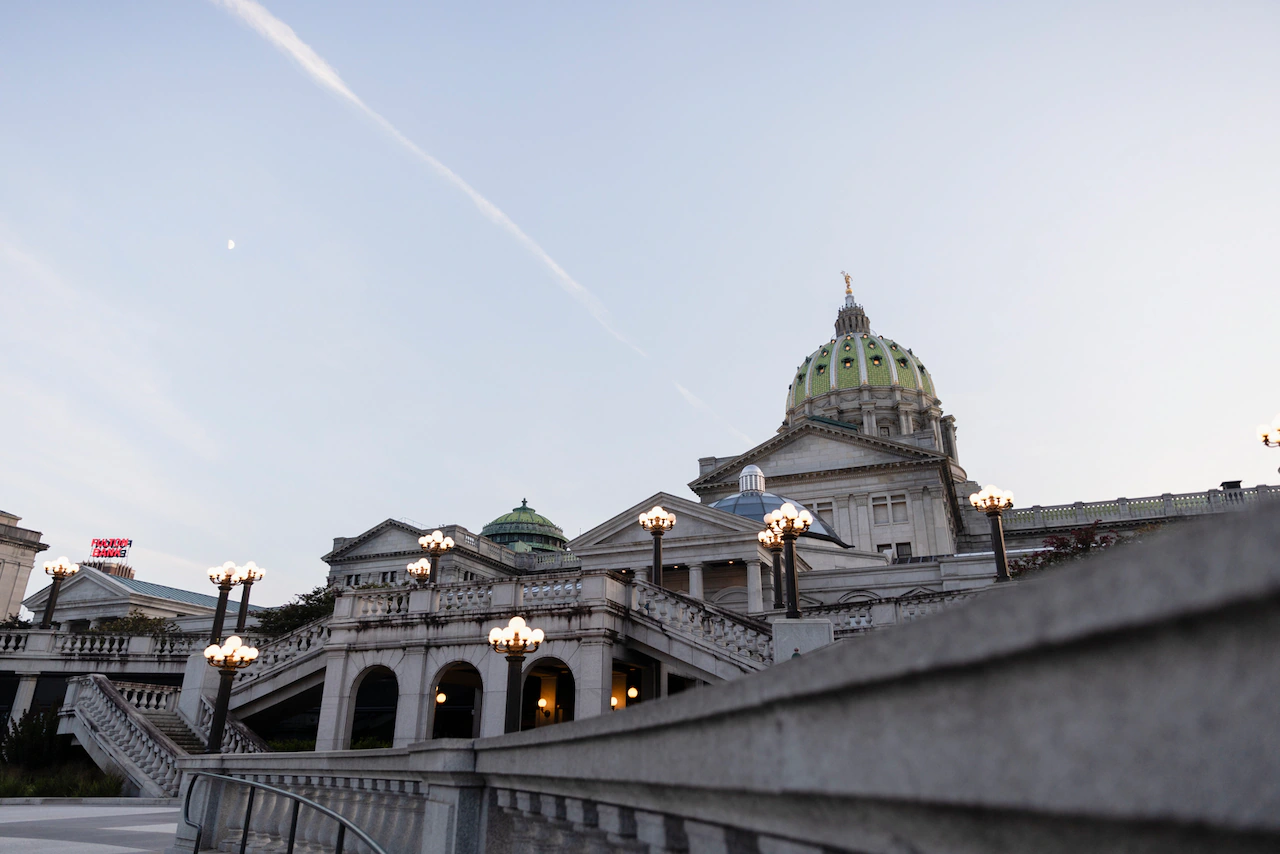Copyright Mechanicsburg Patriot News

Pennsylvania’s 16-week-long budget impasse will grind on for the foreseeable future, as the Republican-controlled state Senate on Tuesday passed another flat-funded budget that Democrats described as half-baked. Senate Democrats expressed dismay that Republicans were treading over the same ground they were in August, when the Senate GOP passed a budget bill nearly identical to the one that passed Tuesday on a party-line vote. Republicans said they were justified in holding their ground given the gap between the state’s projected revenues and Shapiro’s desired spending levels, saying that Democrats’ previous compromise offers didn’t bring expenditures down enough to make a meaningful dent in the deficit. Despite Democrats’ earnest concessions, “they thumbed their nose, said ‘go to heck, we’re not interested, we’re going to be here another couple months,’” Sen. Vincent Hughes, D-Philadelphia, the ranking Democrat on the Senate Appropriations Committee, said of his Republican counterparts. “Just because your top priority didn’t get addressed doesn’t mean our priorities are no longer relevant,” said Senate Majority Leader Joe Pittman, R-Indiana County. In other words, the punting of Democrats’ mass transit issue doesn’t mean GOP demands — on matters like energy regulation and private school vouchers — are off the table, Pittman and other Republicans said. Shapiro “galivanting around the state taking potshots at members of this caucus doesn’t help,” Pittman added. The governor, at an unrelated press event in Allegheny County, said Senate Republicans’ latest proposal is “a joke. It doesn’t actually meet the obligations of this Commonwealth. It’s a gimmick, and it’s not designed to be serious or get the job done.” The budget bill that passed the Senate on Tuesday would appropriate $47.9 billion from the general fund — the state’s main operating account — for the 2025-26 fiscal year, which began July 1 with no spending authorizations in place. This is effectively the same budget as last year’s, which passed at $47.6 billion but also saw overages in areas like prison costs. Tuesday’s appropriations make necessary increases to the state’s pension and debt obligations, while also reducing legislative expenses by about 5%, according to Pittman’s office. “It’s still essentially a flat-funded budget,” said Sen. Steve Santarsiero, D-Bucks County. Republicans’ extremely minor changes relative to their August flat-funded budget bill, Santarsiero commented, were akin to rearranging the deck chairs on the Titanic. The budget framework Shapiro presented earlier this year called for $51.5 billion in spending, a mix of new programs as well as the increased cost of operating existing ones. Even setting aside the former, a flat-funded budget would be chaotic to implement because of the latter. Democrats have pointed out that Republicans — if they are truly serious about a flat-funded budget — would also need to pass bills specifying what program cuts are to be made to accommodate inflationary cost increases. “What is the problem with this proposed budget that’s in front of us right now?” Santarsiero posed on the Senate floor. “In very simple terms, for the people of Pennsylvania, this is it: education and healthcare funding. “We have an obligation of $1.7 billion over the next two years in healthcare funding,” Santarsiero continued, referencing the state’s anticipated rise in Medicaid costs, and “we have an obligation of roughly $500 million in education funding adequacy that the courts have demanded. “A $47.9 billion budget doesn’t address either of those things,” Santarsiero said, “and therefore it’s not a solution.” House Democrats’ $50.25 billion compromise offer earlier this month would increase funding to the state Department of Human Services by $1.15 billion, mostly in Medicaid-funded programs. It would also devote $565 million to the new formulas used to dole out state assistance to school districts, created in light of the landmark court decision that found Pennsylvania’s school funding mechanisms to be unconstitutionally inequitable. The space to come down on the healthcare and education numbers is limited, with Senate Minority Leader Jay Costa, D-Allegheny County, saying that Shapiro’s original request of an additional $526 million for K-12 equity funding was the “line in the sand” below which Democrats were reluctant to go. “We’re regressing,” Costa said of budget talks, “and we’re regressing in a number of areas,” not the least of which is Republicans’ broad opposition to putting more money into the K-12 funding formulas. This argument is disingenuous, Republicans said Tuesday, viewing the court ruling as more open-ended and contingent on the student population. “My blood pressure goes up every time I hear ‘the court ordered this education spending,’” said Senate President Pro Tempore Kim Ward, R-Westmoreland County. “They did not do such a thing. There’s nothing about the court saying you have to spend more money every budget. The court said we have to re-evaluate and redo our formula on how the money is put out.” “Acting like people are being cut, when the number of students being served is rapidly declining, is not being honest with Pennsylvania taxpayers,” Senate Appropriations Chairman Scott Martin, R-Lancaster County, said of the state’s dwindling K-12 enrollment. For months, fiscal hawks in the Senate GOP have said they won’t vote for any significant budget increases, and Republicans haven’t taken up any of Shapiro’s suggestions to raise revenue, such as taxing slot-machine-like “skill games” or recreational marijuana. Democrats have put increasing pressure on Ward and Pittman to call a compromise budget bill up for a vote, given that it could very well pass with a combination of Democrats and moderate Republicans in support, even if it fractures the GOP caucus. The math involved in getting conservatives on board isn’t getting easier, given what Democrats are asking for. As Martin has often noted, the state’s Independent Fiscal Office has revised revenue projections downward, due in part to changes in federal tax law that have a mirror effect on the state. Even at $47.9 billion, the general fund will likely still run a deficit, eating into the fund’s surplus and into the separate “rainy day” reserve account, which holds around $11 billion combined. “What is most important is that we are not placing the Commonwealth of Pennsylvania in an even bigger hole by using one-time dollars that will exhaust our fiscal stability,” and result in a lowered bond rating and even larger program cuts or tax hikes down the road, Martin said. State employees continue to be paid even without new appropriations in place, and legally required services — including Medicaid — continue to run. Counties and nonprofits that rely on state funds, however, are now in their fourth month without money and are increasingly taking out loans and looking at furloughs in order to continue operating. The federal shutdown, some officials have warned, is already starting to compound the problem.



